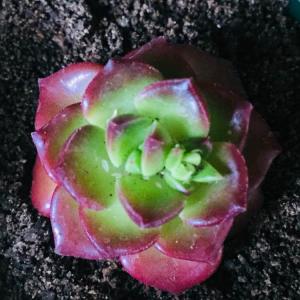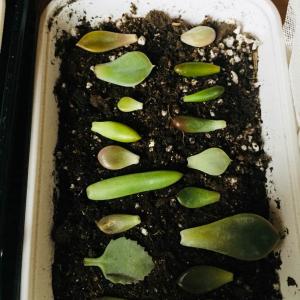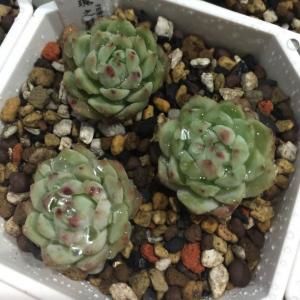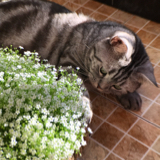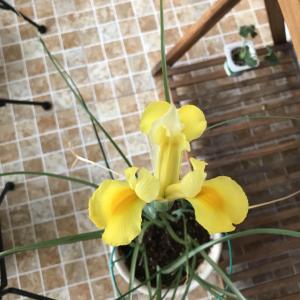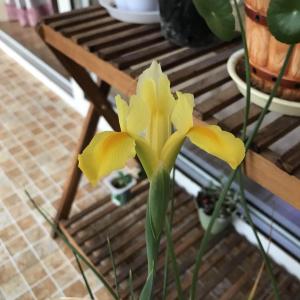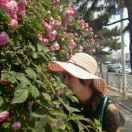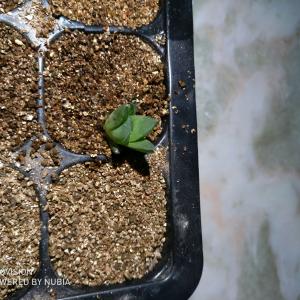心扉的猫咪
2018年03月06日

2018.3.6
1.单瓣长寿继续开开开
2.蟹爪兰开始长新叶
3.小拼盘
4.冻的不行的海棠缓了过来
5.紫色四叶草开始苏醒
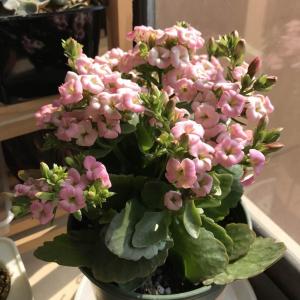
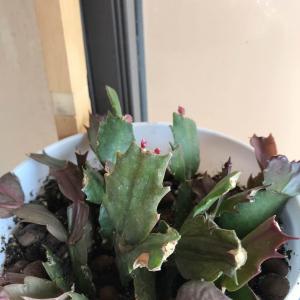
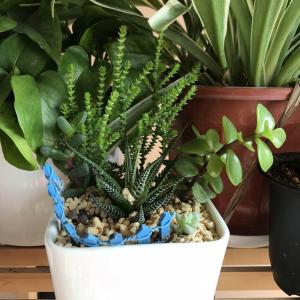
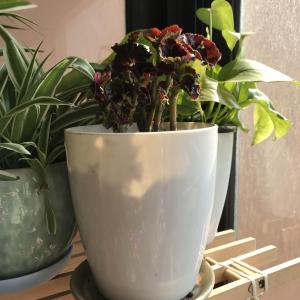
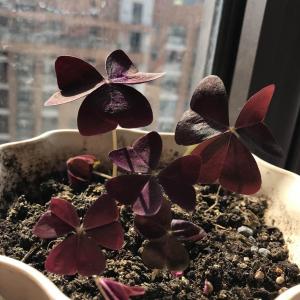
1.单瓣长寿继续开开开
2.蟹爪兰开始长新叶
3.小拼盘
4.冻的不行的海棠缓了过来
5.紫色四叶草开始苏醒





1
0
心扉的猫咪:@lrgarden 春天真美好 万物苏醒
lrgarden:春天来了😄
心扉的猫咪
2018年03月06日

2018.3.6
1.蓝雪苗长势不错,欢了大盆
2.文竹移入了单间,爆出新芽
3.发财树之前都掉光了叶子,今日开始抽新枝
4.三色堇长出新花苞
5.瓜叶菊新买的,看看花而已
6.捡回家的紫罗兰,随便种种
7.不知是小丽花还是大丽花,也是刚捡到的
8.前年的红色重瓣长寿,花苞出了一个多月了,还没开
9.仙客来好像长了虫子,用了药试试看
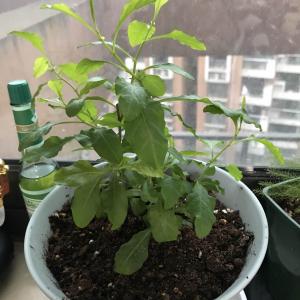
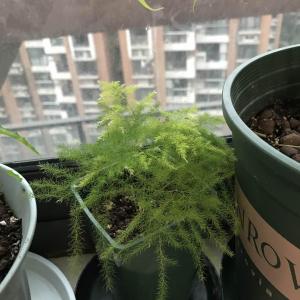
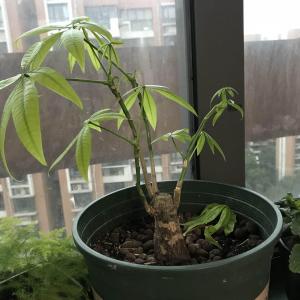
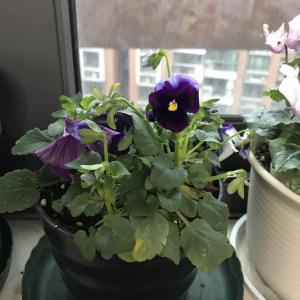
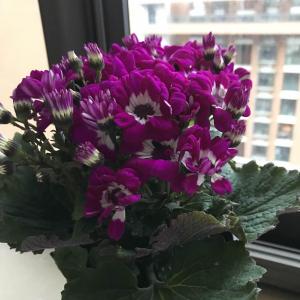
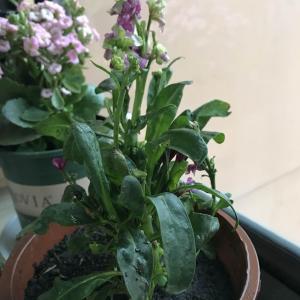
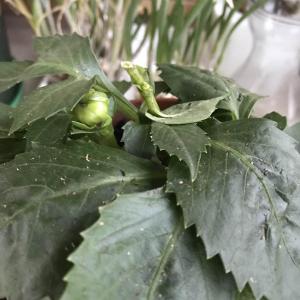
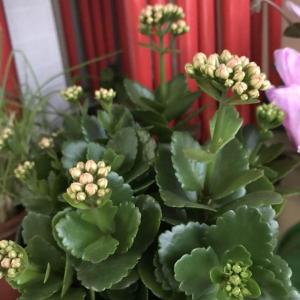

1.蓝雪苗长势不错,欢了大盆
2.文竹移入了单间,爆出新芽
3.发财树之前都掉光了叶子,今日开始抽新枝
4.三色堇长出新花苞
5.瓜叶菊新买的,看看花而已
6.捡回家的紫罗兰,随便种种
7.不知是小丽花还是大丽花,也是刚捡到的
8.前年的红色重瓣长寿,花苞出了一个多月了,还没开
9.仙客来好像长了虫子,用了药试试看









0
0
文章
Miss Chen
2018年03月04日

Description: This herbaceous perennial wildflower is 1½-3' tall, consisting of an unbranched stem with several pairs of opposite leaves. The erect central stem is light green to purplish green and more or less pubescent in either patches or lines. The leaves are 3-6" long and 1-3" across; they are oblong-ovate to oblong-obovate in shape and smooth along their margins. The upper leaf surface is medium green and glabrous, while the lower surface is pale green. The leaves taper abruptly to oblique tips, while their bases are either rounded or wedge-shaped. The petioles are ¼-1¼" long, light green to purplish green, and appressed-hairy. Leaf venation is pinnate. The central stem terminates in 1-4 umbels of white flowers on peduncles ½-2" long. In addition to the terminal umbels, 1-2 axillary umbels of flowers may develop from the axils of the upper leaves, although this is uncommon. The peduncles of these umbels are light green to purplish green and short-pubescent. Individual umbels of flowers span about 2-3" across, consisting of 15-35 flowers; the umbels are dome-shaped to nearly globoid. The flowers are usually densely arranged within the umbels, although in shaded situations the umbels can be more open.
Umbel of Flowers
Each flower spans about 8-10 mm. across, consisting of a short light green calyx with 5 teeth, 5 white petals, a corona with 5 white hoods, and a short central column containing the reproductive organs. Each flower usually has a narrow purple ring between the petals and the corona. The petals are obovate in shape and 6-8 mm. long; they are widely spreading to drooping. Each hood (about 4-5 mm. in length) contains an exerted slender horn that bends toward the center of the flower. The pedicels of the flowers are about 1-1½" long, light green to pale purplish green, and finely pubescent. The blooming period occurs from late spring to early summer, lasting about 3-4 weeks. The flowers are fragrant. Cross-pollinated flowers are replaced by lanceoloid seedpods (follicles) about 4-5" long and ¾" across; their outer surfaces are smooth and downy. During the late summer or fall, each seedpod splits open along one side to release its seeds. The seeds have tufts of white hair and they are distributed by the wind. The rhizomatous root system can produce small colonies of clonal plants.
Cultivation: The preference is partial sun to light shade, dry-mesic conditions, and soil containing clay-loam, loam, or rocky material. Most growth and development occurs during the spring after the danger of hard frost has passed.

Range & Habitat: The native White Milkweed is occasional in southern Illinois, while in the rest of the state it is absent (see Distribution Map). Illinois lies along the NW range limit of this species. Habitats include upland savannas, barren rocky bluffs, upland rocky woodlands, wooded hillsides, rocky banks of streams, and woodland edges along roadsides. Occasional wildfires and other kinds of disturbance are beneficial if they reduce competition from woody vegetation. This wildflower is found in average to high quality natural areas.
Faunal Associations: Little is known specifically about the floral-faunal relationships of White Milkweed, although it is probably similar to other milkweeds that are found in wooded areas. The nectar of the showy flowers attracts butterflies, skippers, and possibly moths; other likely floral visitors include various long-tongued bees and wasps. The Insect Table lists the various species that feed on the foliage, stems, plant juices, and other parts of milkweeds. White Milkweed is one of the food plants for the caterpillars of the Monarch butterfly (Danaus plexippus). Because the bitter white sap of the foliage contains toxic cardiac glycosides, it is avoided by mammalian herbivores.
Photographic Location: A woodland border along a dusty gravel road. The leaves of the photographed plants would appear more green, but they are covered by a layer of dust that was generated by passing motor vehicles.

Comments: This milkweed has very showy flowers and it should be cultivated more often. The flowers are mostly white, except for a narrow purple ring between the petals and the hooded corona. This is the source of another common name, 'Red-Ring Milkweed.' Illinois has several native species of milkweed with white flowers, although most of these have rather restricted ranges within the state. A species that is found in northern Illinois, Asclepias ovalifolia (Oval-Leaved Milkweed), has flowers and leaves that are similar in appearance to those of White Milkweed. However, Oval-Leaved Milkweed is a smaller plant (typically only ¾-1½' tall) and its leaves are more pubescent. Another northern species with white flowers, Asclepias lanuginosa (Woolly Milkweed), has stems with spreading hairs and its leaves are more narrow. A third species, Asclepias perennis (Swamp White Milkweed), also has more narrow leaves and its umbels of flowers are more flat-topped. This latter species also occurs in southern Illinois, but it is found in more soggy habitats such as swamps. Another white-flowered species, Asclepias verticillata (Whorled Milkweed), has a very different appearance from the preceding species because of its whorls of narrowly linear leaves.
Umbel of Flowers
Each flower spans about 8-10 mm. across, consisting of a short light green calyx with 5 teeth, 5 white petals, a corona with 5 white hoods, and a short central column containing the reproductive organs. Each flower usually has a narrow purple ring between the petals and the corona. The petals are obovate in shape and 6-8 mm. long; they are widely spreading to drooping. Each hood (about 4-5 mm. in length) contains an exerted slender horn that bends toward the center of the flower. The pedicels of the flowers are about 1-1½" long, light green to pale purplish green, and finely pubescent. The blooming period occurs from late spring to early summer, lasting about 3-4 weeks. The flowers are fragrant. Cross-pollinated flowers are replaced by lanceoloid seedpods (follicles) about 4-5" long and ¾" across; their outer surfaces are smooth and downy. During the late summer or fall, each seedpod splits open along one side to release its seeds. The seeds have tufts of white hair and they are distributed by the wind. The rhizomatous root system can produce small colonies of clonal plants.
Cultivation: The preference is partial sun to light shade, dry-mesic conditions, and soil containing clay-loam, loam, or rocky material. Most growth and development occurs during the spring after the danger of hard frost has passed.

Range & Habitat: The native White Milkweed is occasional in southern Illinois, while in the rest of the state it is absent (see Distribution Map). Illinois lies along the NW range limit of this species. Habitats include upland savannas, barren rocky bluffs, upland rocky woodlands, wooded hillsides, rocky banks of streams, and woodland edges along roadsides. Occasional wildfires and other kinds of disturbance are beneficial if they reduce competition from woody vegetation. This wildflower is found in average to high quality natural areas.
Faunal Associations: Little is known specifically about the floral-faunal relationships of White Milkweed, although it is probably similar to other milkweeds that are found in wooded areas. The nectar of the showy flowers attracts butterflies, skippers, and possibly moths; other likely floral visitors include various long-tongued bees and wasps. The Insect Table lists the various species that feed on the foliage, stems, plant juices, and other parts of milkweeds. White Milkweed is one of the food plants for the caterpillars of the Monarch butterfly (Danaus plexippus). Because the bitter white sap of the foliage contains toxic cardiac glycosides, it is avoided by mammalian herbivores.
Photographic Location: A woodland border along a dusty gravel road. The leaves of the photographed plants would appear more green, but they are covered by a layer of dust that was generated by passing motor vehicles.

Comments: This milkweed has very showy flowers and it should be cultivated more often. The flowers are mostly white, except for a narrow purple ring between the petals and the hooded corona. This is the source of another common name, 'Red-Ring Milkweed.' Illinois has several native species of milkweed with white flowers, although most of these have rather restricted ranges within the state. A species that is found in northern Illinois, Asclepias ovalifolia (Oval-Leaved Milkweed), has flowers and leaves that are similar in appearance to those of White Milkweed. However, Oval-Leaved Milkweed is a smaller plant (typically only ¾-1½' tall) and its leaves are more pubescent. Another northern species with white flowers, Asclepias lanuginosa (Woolly Milkweed), has stems with spreading hairs and its leaves are more narrow. A third species, Asclepias perennis (Swamp White Milkweed), also has more narrow leaves and its umbels of flowers are more flat-topped. This latter species also occurs in southern Illinois, but it is found in more soggy habitats such as swamps. Another white-flowered species, Asclepias verticillata (Whorled Milkweed), has a very different appearance from the preceding species because of its whorls of narrowly linear leaves.
1
0
文章
Miss Chen
2018年03月04日

Description: This perennial plant is about 1¾-2¾' tall and unbranched. The central stem is light green, round in cross-section (terete), and glabrous to finely pubescent. The opposite leaves are up to 6" long and 3" across. They are ovate-oblong or broadly lanceolate, with smooth margins that may undulate up and down. The leaves often curl upward from the pinkish central vein. The upper surface of the foliage is mostly glabrous and yellowish green to dark green (depending on light conditions), while the lower surface is light green and softly pubescent (at least along the major veins). Leaf venation is pinnate. The central stem terminates with 1-6 umbels of flowers; there may be a few axillary umbels from some of the upper leaves as well. Each rounded umbel is about 2-3" across. These flowers have the typical structure for milkweeds; they are pale purple to deep purple, sometimes with greenish or rosy tints. However, the central reproductive column and the bases of the deflexed petals are more pale than the rest of the flower.
Flowering Plant
The hoods are much taller than the horns; the latter curve inward toward the reproductive column and appear spike-like (but are slightly thicker toward the base). The blooming period occurs from late spring to mid-summer, and lasts about one month. The flowers have a pleasant fragrance. If cross-pollination occurs, the flowers are replaced by seedpods (follicles) that are held erect. These seedpods are up to 6" long and 1" across; they are narrowly lanceoloid in shape. They have a smooth surface and are finely short-pubescent or canescent. The seeds have large tufts of white hair; they are distributed by the wind. The root system consists of a fleshy taproot and rhizomes; small colonies of plants are sometimes produced from the rhizomes.
Cultivation: The preference is partial sun and mesic conditions; this plant also tolerates light shade and full sun, as well as considerable variations in the moisture regime. Immature plants are inclined to wilt during a drought, and should be watered. The soil can consist of moisture-retaining loam or clay-loam. The plants make rapid growth during the late spring until they flower and form seedpods, then they gradually degenerate. It takes 3 years or more for a small transplant or seedling to reach flowering size. The leaves have tendency to turn yellow and curl in response to dry sunny conditions, or when they become old.
Range & Habitat: The native Purple Milkweed is an occasional plant that is widely distributed in Illinois (see Distribution Map). However, it is uncommon or absent in some areas of NW, central, and east-central Illinois. Habitats include lower slopes of hill prairies, meadows in wooded areas, thickets and woodland borders, bluffs and open woodlands, oak savannas, glades, and roadsides. This plant usually occurs along prairie edges near wooded areas, rather than in open prairie. It is usually found in higher quality habitats.

Faunal Associations: The nectar of the flowers attracts long-tongued bees, butterflies, and skippers. To a lesser extent, green metallic bees and other Halictid bees may visit the flowers, but they are less effective at pollination. Another unusual visitor of the flowers is the Ruby-Throated Hummingbird. Among the butterflies, such visitors as the Pipevine Swallowtail, Giant Swallowtail, American Painted Lady, Red Admiral, Clouded Sulfur, Eastern Tailed-Blue, Regal Fritillary, Great Spangled Fritillary, and many others have been reported. A group of oligophagous insects feed on milkweeds. They include caterpillars of the butterfly Danaus plexippes (Monarch); caterpillars of the moths Cycnia inopinatus (Unexpected Cycnia) and Cycnia tenera (Delicate Cycnia); the aphids Aphis asclepiadis, Aphis nerii, and Myzocallis asclepiadis; Lygaeus kalmii (Small Milkweed Bug) and Oncopeltus fasciatus (Large Milkweed Bug); and Tetraopes tetrophthalmus (Red Milkweed Beetle). Mammalian herbivores rarely consume Purple Milkweed and other milkweeds because of the bitter-tasting, toxic foliage, which contains cardiac glycosides.

Photographic Location: The photographs were taken at the webmaster's wildflower garden in Urbana, Illinois, and at the Coneflower Hill Prairie near Lake Shelbyville in east-central Illinois.
Comments: The flowers of Purple Milkweed are quite attractive. This species is less aggressive than Asclepias syriaca (Common Milkweed), which it resembles somewhat in appearance. However, the flowers of Purple Milkweed are usually a deeper color of purple and more likely to occur in terminal umbels at the apex of the central stem, rather than as axillary umbels between the upper leaves. The seedpods of Purple Milkweed are smooth, while the seedpods of Common Milkweed have soft prickles. Purple Milkweed also resembles Asclepias rubra (Red Milkweed), but the horns on the flowers of the latter species are straight and about as tall as the hoods, while the horns of Purple Milkweed are shorter than the hoods and curve inward toward the reproductive column of the flowers.
Flowering Plant
The hoods are much taller than the horns; the latter curve inward toward the reproductive column and appear spike-like (but are slightly thicker toward the base). The blooming period occurs from late spring to mid-summer, and lasts about one month. The flowers have a pleasant fragrance. If cross-pollination occurs, the flowers are replaced by seedpods (follicles) that are held erect. These seedpods are up to 6" long and 1" across; they are narrowly lanceoloid in shape. They have a smooth surface and are finely short-pubescent or canescent. The seeds have large tufts of white hair; they are distributed by the wind. The root system consists of a fleshy taproot and rhizomes; small colonies of plants are sometimes produced from the rhizomes.
Cultivation: The preference is partial sun and mesic conditions; this plant also tolerates light shade and full sun, as well as considerable variations in the moisture regime. Immature plants are inclined to wilt during a drought, and should be watered. The soil can consist of moisture-retaining loam or clay-loam. The plants make rapid growth during the late spring until they flower and form seedpods, then they gradually degenerate. It takes 3 years or more for a small transplant or seedling to reach flowering size. The leaves have tendency to turn yellow and curl in response to dry sunny conditions, or when they become old.
Range & Habitat: The native Purple Milkweed is an occasional plant that is widely distributed in Illinois (see Distribution Map). However, it is uncommon or absent in some areas of NW, central, and east-central Illinois. Habitats include lower slopes of hill prairies, meadows in wooded areas, thickets and woodland borders, bluffs and open woodlands, oak savannas, glades, and roadsides. This plant usually occurs along prairie edges near wooded areas, rather than in open prairie. It is usually found in higher quality habitats.

Faunal Associations: The nectar of the flowers attracts long-tongued bees, butterflies, and skippers. To a lesser extent, green metallic bees and other Halictid bees may visit the flowers, but they are less effective at pollination. Another unusual visitor of the flowers is the Ruby-Throated Hummingbird. Among the butterflies, such visitors as the Pipevine Swallowtail, Giant Swallowtail, American Painted Lady, Red Admiral, Clouded Sulfur, Eastern Tailed-Blue, Regal Fritillary, Great Spangled Fritillary, and many others have been reported. A group of oligophagous insects feed on milkweeds. They include caterpillars of the butterfly Danaus plexippes (Monarch); caterpillars of the moths Cycnia inopinatus (Unexpected Cycnia) and Cycnia tenera (Delicate Cycnia); the aphids Aphis asclepiadis, Aphis nerii, and Myzocallis asclepiadis; Lygaeus kalmii (Small Milkweed Bug) and Oncopeltus fasciatus (Large Milkweed Bug); and Tetraopes tetrophthalmus (Red Milkweed Beetle). Mammalian herbivores rarely consume Purple Milkweed and other milkweeds because of the bitter-tasting, toxic foliage, which contains cardiac glycosides.

Photographic Location: The photographs were taken at the webmaster's wildflower garden in Urbana, Illinois, and at the Coneflower Hill Prairie near Lake Shelbyville in east-central Illinois.
Comments: The flowers of Purple Milkweed are quite attractive. This species is less aggressive than Asclepias syriaca (Common Milkweed), which it resembles somewhat in appearance. However, the flowers of Purple Milkweed are usually a deeper color of purple and more likely to occur in terminal umbels at the apex of the central stem, rather than as axillary umbels between the upper leaves. The seedpods of Purple Milkweed are smooth, while the seedpods of Common Milkweed have soft prickles. Purple Milkweed also resembles Asclepias rubra (Red Milkweed), but the horns on the flowers of the latter species are straight and about as tall as the hoods, while the horns of Purple Milkweed are shorter than the hoods and curve inward toward the reproductive column of the flowers.
0
0



